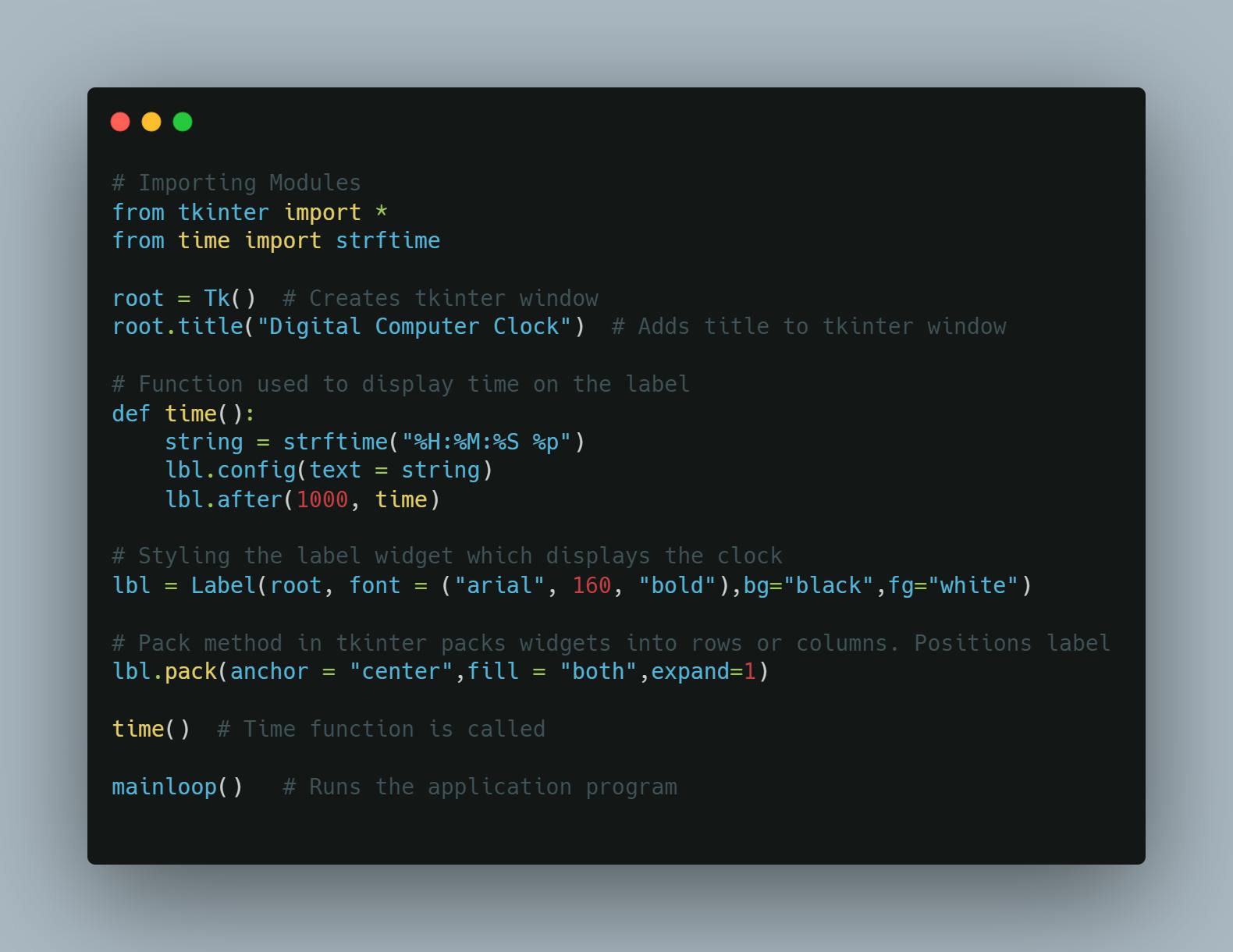How to Build a Digital Time Clock Using Python
 Sneha
SnehaWhat Are We Going to Build?

This amazing digital clock ⏰
What Are We Going to Learn Today?
1. Tkinter & Time Module
2. Basics of Python: Functions
3. Creating a Tkinter Window, Giving Title to the Window,
Setting Background & Setting Label
4. Implementation of the Digital Clock With Detailed Explanation
Step 1: The Design
Hold on! Hold on! Before diving into the development part, an insightful coder must have a clear idea of the project he is going to make. To keep it as simple and elegant as possible, I planned a rectangular digital clock with a black background, white text, and the HH:MM:SS time format. You can choose to add AM/PM as per your liking.
Step 2: Modules Required:
1. What is the Tkinter module?
For this project, we would be using the Tkinter module. Tkinter is a Python binding to the Tk GUI toolkit. It is the standard Python interface to the Tk GUI toolkit and is Python's de-facto standard GUI. You can access the official documentation of Tkinter Module from here.
2. What is the Time Module?
The time module provides various time-related functions. We use it to retrieve the system time and display it on the screen.
Step 3: Time to Code!
The first step is to import everything(all classes, functions, and variables) stored inside Tkinter to our program file. To do that we type:
from tkinter import *
'*' stands for all/everything.
After importing Tkinter, I'd like to import a function called strftime from the module time. The strftime() method returns a string representing date and time using date, time, or datetime object. In simpler terms, it retrieves the system time.
from time import strftime
Now, I want to create a window for the clock. To do that, I make use of Tk from the Tkinter module.
root = Tk() # Creates tkinter window
Let's give the title to the window as 'Digital Computer Clock.'
root.title("Digital Computer Clock") # Adds title to tkinter window
Creating a function to display time on a label. For this, I will be using the Tkinter Label Widget.
# user defined time function
def time():
# fetching the system time in the desired time format and storing inside variable string
string = strftime("%H:%M:%S %p") #%p for AM/PM
# label variable displaying time retrieved from the computer
lbl.config(text = string)
# run the function after every 1000ms, that is 1 second
lbl.after(1000, time)
Styling the label widget with font Arial, size 160, bold format, background color as black, and foreground color as white.
lbl = Label(root, font = ("arial", 160, "bold"),bg="black",fg="white")
The pack method in Tkinter packs widgets into rows or columns. I want the content to be packed in the center, filling the entire space assigned to it both horizontally and vertically. Lastly, the expand option adds a little space to the widget box if necessary.
lbl.pack(anchor = "center",fill = "both",expand=1)
Finally, we call the functions and run the program.
time()
mainloop()
The Final Source Code for the Digital Time Clock Can Be Seen Below :

Hope you enjoyed my content. Happy Learning!!
For any feedback please mail on: (tripathisneha809@gmail.com)
Subscribe to my newsletter
Read articles from Sneha directly inside your inbox. Subscribe to the newsletter, and don't miss out.
Written by